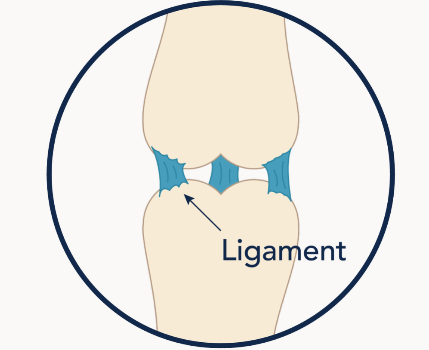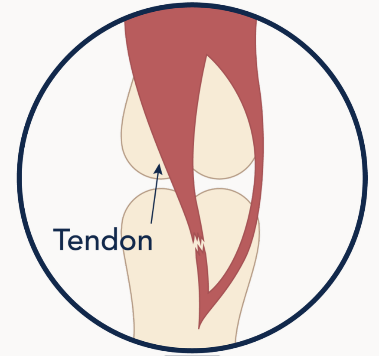Headlines
Sprains & Strains: Understanding the Difference, Treatment & Prevention
09 August 2021

It is only really when we are faced with an injury for the first time that we start to learn how our bodies work. Understanding how we function and how we can potentially get injured gives us an opportunity to avoid or know how to easily treat an injury.
Common injuries are sprains and strains where ligaments and tendons play a huge role.
Ligaments & Tendons
Ligaments and tendons are both made up of fibrous connective tissue but are very different in their functions. Ligaments attach bone to bone and help to stabilise joints. Tendons are located at the end of a muscle and attach muscle to bone.Sprains & Strains
 Sprains:
Sprains: Sprains typically occur when there would be a stretch or tear in a ligament. They usually happen in the ankle, knee and wrist. Sprains are usually caused by a fall, sudden twist or blow to the body that forces a joint out its normal position. Signs and symptoms of a sprain include pain, swelling, bruising and loss of the ability to move and use the joint. Sometimes people feel a pop or tear when the injury happens.
Strains:
 Strains happen when there is a stretch or tear in a muscle or tendon. They usually take place in the lower back, hamstring, hand and forearm. A strain is caused by twisting or pulling a muscle or tendon. An acute strain is caused by trauma like a blow to the body or can also be caused by over-stressing the muscle. Signs and symptoms of a strain can include pain, muscle spasm, muscle weakness, localised swelling, cramping or inflammation. In a minor or moderate strain there is usually some loss of muscle function.
Strains happen when there is a stretch or tear in a muscle or tendon. They usually take place in the lower back, hamstring, hand and forearm. A strain is caused by twisting or pulling a muscle or tendon. An acute strain is caused by trauma like a blow to the body or can also be caused by over-stressing the muscle. Signs and symptoms of a strain can include pain, muscle spasm, muscle weakness, localised swelling, cramping or inflammation. In a minor or moderate strain there is usually some loss of muscle function.How to Recover from a Sprain or Strain
When you experience a sprain or strain, it is vital to treat it correctly so that the injury heals properly and doesn’t develop into something more sinister. Always consult a physiotherapist or doctor if you experience an injury.The R.I.C.E method is a trusted recovery procedure that is recommended by physiotherapists after a sprain or strain.

- REST: Avoid weight bearing activity on the injured area in the first 24 to 48 hours of the injury occurring.
- ICE: Ice the injured area with a cold compress for 15 minutes every 2 to 3 hours. This will help reduce pain, swelling and bruising.
- COMPRESS: Compress the injured area with a strapping tape to help limit swelling and movement. Depending on the severity of the injury you can choose between medium, firm or extra firm compression to restrict mobility completely.
- ELEVATE: Elevate the injury, resting above heart level and keep supported. This will further help reduce any swelling.
Hot/Cold Therapy
As mentioned above, cold therapy is ideal when suffering from a sprain or strain but when is it appropriate to use cold or hot therapy?
- Cold therapy is ideal for acute soft tissue injuries such as minor bumps, bruises, sprains and strains. It helps to reduce swelling and ease pain as reduces blood flow to the affected area.
- Hot therapy is used for muscle and joint aches, strains and sprains of a more longer lasting nature (chronic). It helps to relax, soothe and improve circulation of blood in the affected area.
Medicare Cold Therapy Products:
Medicare Hot Therapy Products:
Medicare Hot & Cold Therapy Products:
Tips to Prevent Sprains & Strains
- Warm up before exercising: Going straight into a workout or training session without warming up puts you at risk for injury. Prepare your muscles for the strenuous activity by jogging or other light cardio exercises.
- Stretch. Stretching is very important to avoid cramping or sprains and strains. Set aside time to stretch which will also help with DOMS (Delayed Onset Muscle Soreness).
- Diet. Make sure your diet includes a good source of protein as it helps to repair and rebuild muscles after they are strained or under pressure.
- Footwear. Depending on the sport or activity you are partaking in, make sure you are wearing the correct footwear. Surfaces vary in sports so do your research so that you are prepared and contribute a lot to injuries if correct footwear is not worn.
- Recovery. Rest and recover in between sessions and make sure you are not overexerting your muscles.
Watch our video with Sarah Lavin below as she shows us her top 3 warm up routines.









